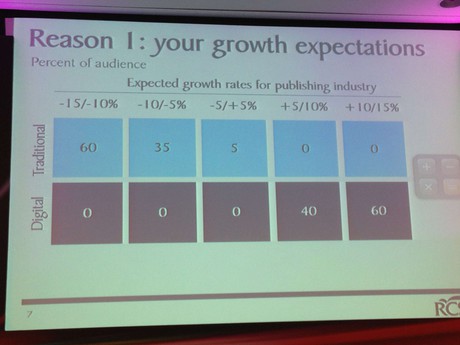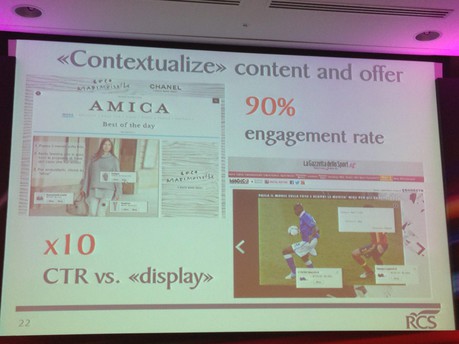
Publishers must diversify into other industries in order to survive, delegates to the WAN-IFRA Digital Media Europe conference in London were told today, and e-commerce is a viable starting point.
Speaking in the opening session, Alceo Rapagna, chief digital officer of RCS Media Group, took a survey of delegates to understand their expectations on how traditional and digital revenues would grow in the near future.

Based on those expectations, he said, it would take many years for a publisher to see a return to growth in revenues.
At RCS, which boasts 300,000 digital subscribers and 30 million monthly users across its range of European titles, Rapagna said the publisher is looking to innovate in e-commerce to support revenues.
They aim to achieve this in three "waves", he said.
In the first wave, publishers "leverage powerbrands" to sell "extended editorial content" to readers.
At RCS, popular sport papers such as Marca in Spain and La Gazzetta dello Sport have been selling "newspaper add-ons" such as books or DVDs, "historical pages" around key events in a readers life or favourite team and exclusive brand merchandising
In the second wave, publishers can partner with e-commerce companies around editorial themes – travel, beauty, parenting, home/design and sports were Rapagna's examples – bringing readers and advertisers together around their areas of interest.
In the third wave, where RCS is still experimenting, Rapagna encouraged publishers to "structurally pursue" putting offers into the right context in the page or article the reader is viewing.
In this case, magazines have developed a catalogue of offers in partnership with e-commerce companies to offer clothes or sporting goods when the reader is viewing a relevant article.

Rapagna also encouraged publishers to experiment with "mobilising" offers. In one example, at the Italian daily Corriere Della Sera, comics were promoted as an in-app purchase, prompting a 430 per cent increase in click-through rates compared to when the same product was offered through email marketing.
In another, a Kindle Fire was offered for free alongside subscriptions, while elsewhere users could make impulse buys on advertised products they liked by processing the payment inside the banner ad.
The overall effect was always beneficial, but the key, said Rapagno, was in finding partners relevant to the editorial content and experimenting to find the most effective strategy for each organisation.
Key learnings of RCS' e-commerce initiatives #dme14 pic.twitter.com/B5edJ9C0WC
— Twipe (@TwipeMobile) April 7, 2014
Free daily newsletter
If you like our news and feature articles, you can sign up to receive our free daily (Mon-Fri) email newsletter (mobile friendly).
Related articles
- ‘Question your assumptions’: Tips from Quartz on preparing for what comes next in digital
- Don’t just shut the door: What publishers can do to combat ad-blocking
- Is curation the way forward? A Swiss media group's take on getting people to pay for regional news
- How Spain’s El País is responding to digital transformation
- 5 ways news brands can take advantage of Linkedin









